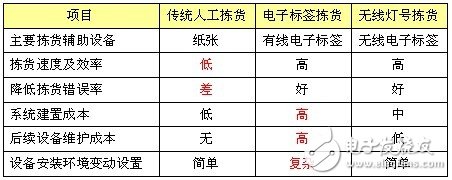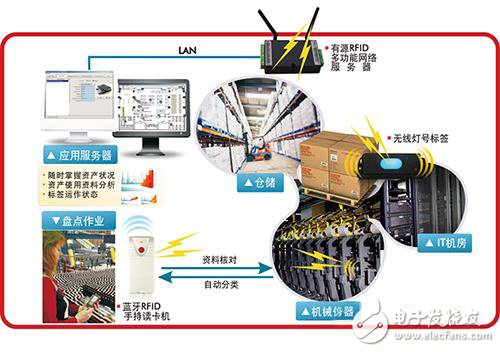Picking operations are often the most complex part of a logistics process, which is the intersection of acceptance, warehousing, storage, packaging, shipping, order processing, and customer demand. The purpose of the picking operation is to quickly and correctly collect the goods ordered by the customer within a limited time, so as to shorten the cycle time from the time the order is placed to the time the goods are collected, and at the same time reduce the associated operating costs. Therefore, how the logistics center uses advanced technology and equipment to improve the efficiency of picking operations, while at the same time taking into account the correctness of the solution has always been the direction of the industry. The current picking system has been proved by many users, and it has a good effect in improving the efficiency of picking and reducing the picking rate. However, the investment amount of a set of fully functional traditional picking equipment often costs millions or even Tens of millions of construction costs, it often takes more than a few months to build, and the resources are quite large. With the development of technology, the picking label has been advanced from paperless to wireless. The new picking label combined with the latest RFID radio frequency technology allows the operator to save huge wiring costs in the initial equipment installation. In addition, the risk and cost of system shutdown and subsequent maintenance derived from the abnormal line of the traditional cable picking system can be solved in the new RFID wireless light picking system. Picking system comparison table The wireless light picking system has been introduced first in a large automobile factory in Taiwan. Since the automobile industry is order-making, the items produced before and after the same production line are different, so the speed and correctness of the parts picking is required. Particularly rigorous, an average of 3 minutes to complete a picking process. Before the automobile factory used the wired electronic label picking system, there would be occasional line faults that could not be ruled out. Please ask someone to repair it, which caused the system to stop for a period of time before it could return to normal, which made the picking operation difficult. After importing the wireless light picking system, there is no line fault in the wireless transmission itself; if the light label fails, the picking personnel can replace the hardware by itself, and the back end system can modify the RFID part correspondingly, and can be eliminated in a few minutes. The fault continues to be used. With the development of technology, the reliability of wireless signals has gradually replaced traditional wired transmission. The high-speed transmission speed can be confirmed dozens of times in just one second. In addition to its application in picking, RFID wireless light tags can be extended to asset management based on features such as wireless lights and RFID. Through active RFID technology, we can assign assets to unique identity information, and With the way of wireless signal location tracking, it can help enterprises to track and record the location and movement of assets in a simple way, so as to achieve better asset management. RFID wireless light asset management diagram EOC is a device for Ethernet transmission over coax featuring Coax to UTP connectivity, equipped with one Ethernet port and four BNC ports, which can make a ring or aggregation. So it can be used in pair or one to multi. Ethernet And Power Over Coax Converter Ethernet And Power Over Coax Converter,Coax To Ethernet,Coax To Ethernet Adapter,Ethernet To Coax Adapter,POE over Coaxial Extender Shenzhen N-net High-Tech Co.,Ltd , http://www.nnetswitch.com


The equipment can transmit signal over all kinds of common cables such as telephone line, Ethernet cable, UTP or coax etc., with excellent isolation, thunder prevention and anti-jamming function. In the practical project, this device is proved to be of high performance in surge prevention. It transmits IP video or Ethernet up to 1.5km at a max rate 70Mbps over existing coax, thus cut the cost by avoid re-cabling when swapping analog cameras for IP/Megapixel models.
it can supply Power Over Ethernet cable for PD devices like HD cameras, wireless AP, IP telephone equipment. Our EOC support IEEE802.3af (15.4W) and IEEE802.3at (25.5W) standard.
EOC series also supports POC (Power over Coax) function. Model at local side (namely the master) can supply power over coax cable for the model at remote side (the slave) and IP cameras.